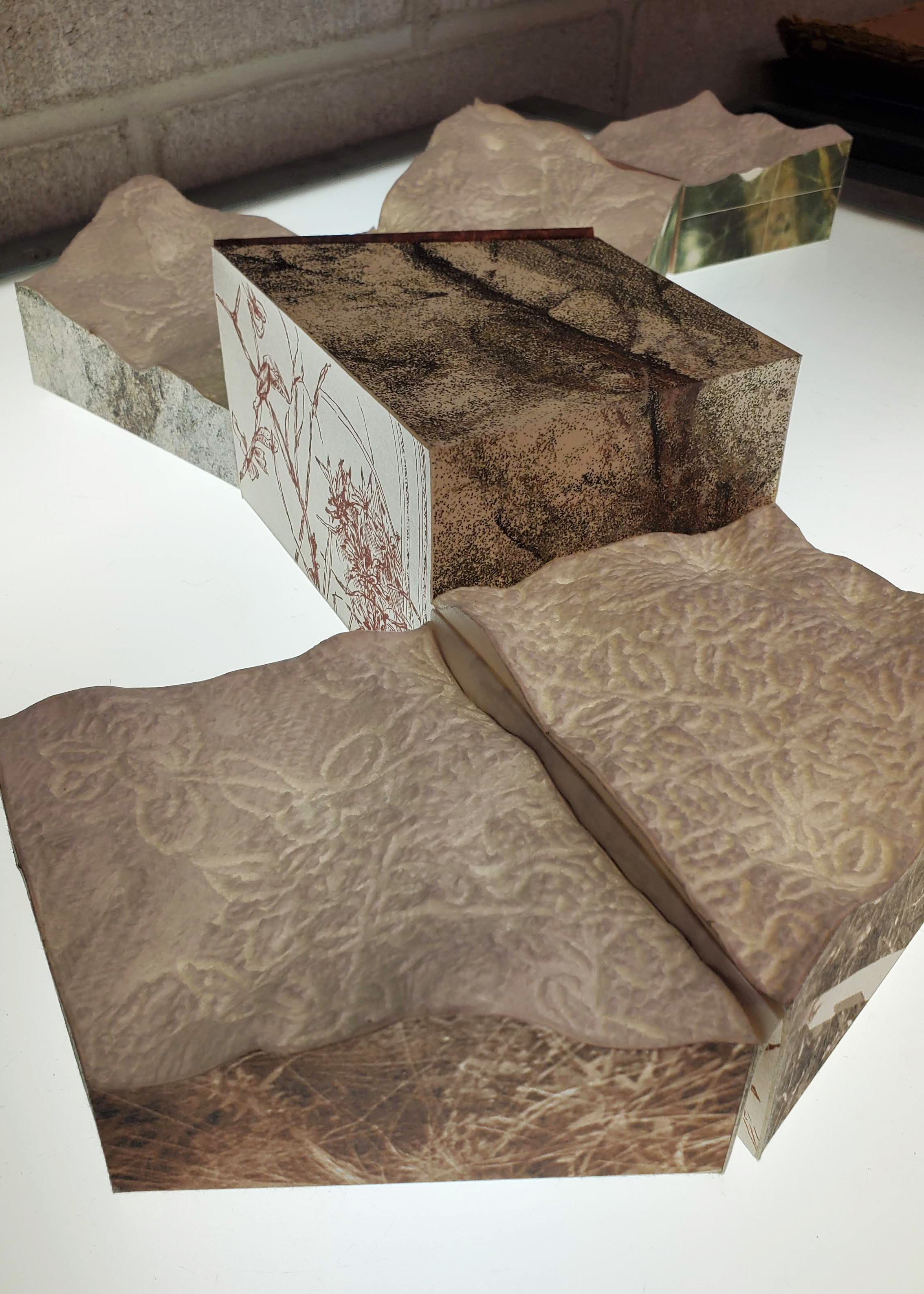

Leah Willemin
Depth Capture, 2022
Handmade paper, screen print and digital print on mulberry paper, book board, book cloth
32x5x8.5”
Created as part of a Jerome fellowship at MCBA
MCBA Prize Semifinalist 2024
Peatlands cover more than 10% of Minnesota—the most of all the lower 48 states. Formed through millennia of accumulated organic matter, peatlands sequester around a third of the worldʼs soil carbon, though they make up only about three percent of the earthʼs surface.1 Higher temperatures and drier conditions as a result of climate change threaten to disrupt this balance: The deep peat beds may begin to decompose, releasing centuries of stored carbon.
For this project I worked with the SPRUCE experiment in Northern Minnesota. There, scientists investigate the effects of climate change upon peatlands by raising the temperature and CO2 levels within enclosed areas of a bog. These enclosures represent potential futures: How might mosses, trees, bushes, fungi, and lichen all respond to higher temperatures? How will their relationships change? As my book unfolds, it depicts shiing arrangements and connections between members of the peatland ecosystem. Fully unfolded, the book takes the shape of the hexagonal enclosures at SPRUCE.
This work contemplates what it means to know a place and an ecosystem—into the future, or into the depth of the soil, or through slow observation and care. Each set of images in the book represents a way of sensing the peatland, drawing upon research data that has been generated at SPRUCE. Using LIDAR scan data, I created 3D paper sheets representing the bog surface. Some images are from below-ground robotic scans of tiny root systems and mycorrhizal fungal networks, and others from webcam shots of the bog. I observed the bog through these programmatic captures before visiting to create a set of in-person sketches, which reflect my own sensing and movement through the site.
The 3D form of this book mimics the depth of a bog and invites the viewer to consider what is not seen, or what is hidden within. In a literal sense, the depth of water and peat that store carbon in a bog are not visible from the surface. But wetlands themselves are also oen overlooked and poorly understood. The complex life they support is not always flashy, but instead demands quiet and close attention.
1. Frolking, S., Talbot, J., Jones, M. C., Treat, C. C., Kauffman, J. B., Tuittila, E. S., & Roulet, N. (2011). Peatlands in the Earthʼs 21st century climate system. Environmental Reviews, 19, 371–396. https://doi.org/10.1139/A11-014
Image and Research Credit
Marcell Experimental Forest Data: Box Interior Graph
Meteorological and hydrological data have been collected at stations on the Marcell site since 1961. The air temperature data shown is provided by USDA and the US Forest Service via public database.
LIDAR Scan Data: Cast Paper Contours and Center Book Images
The Boise State University remote sensing team provided LIDAR scan data captured at SPRUCE from 2017 through 2020.
Minirhizotron Images: Vertical Panels
Images from automated minirhizotron cameras at the Spruce and Peatland Responses Under Changing Environments (SPRUCE) experiment in Northern Minnesota. Photo credits: Joanne Childs, Environmental Sciences Division, Oak Ridge National Laboratory.
Top and Side Book Images
Webcam images from PhenoCam, a network of cameras that track vegetation phenology. SPRUCE webcam images are archived and publicly available at https://PhenoCam.nau.edu.



